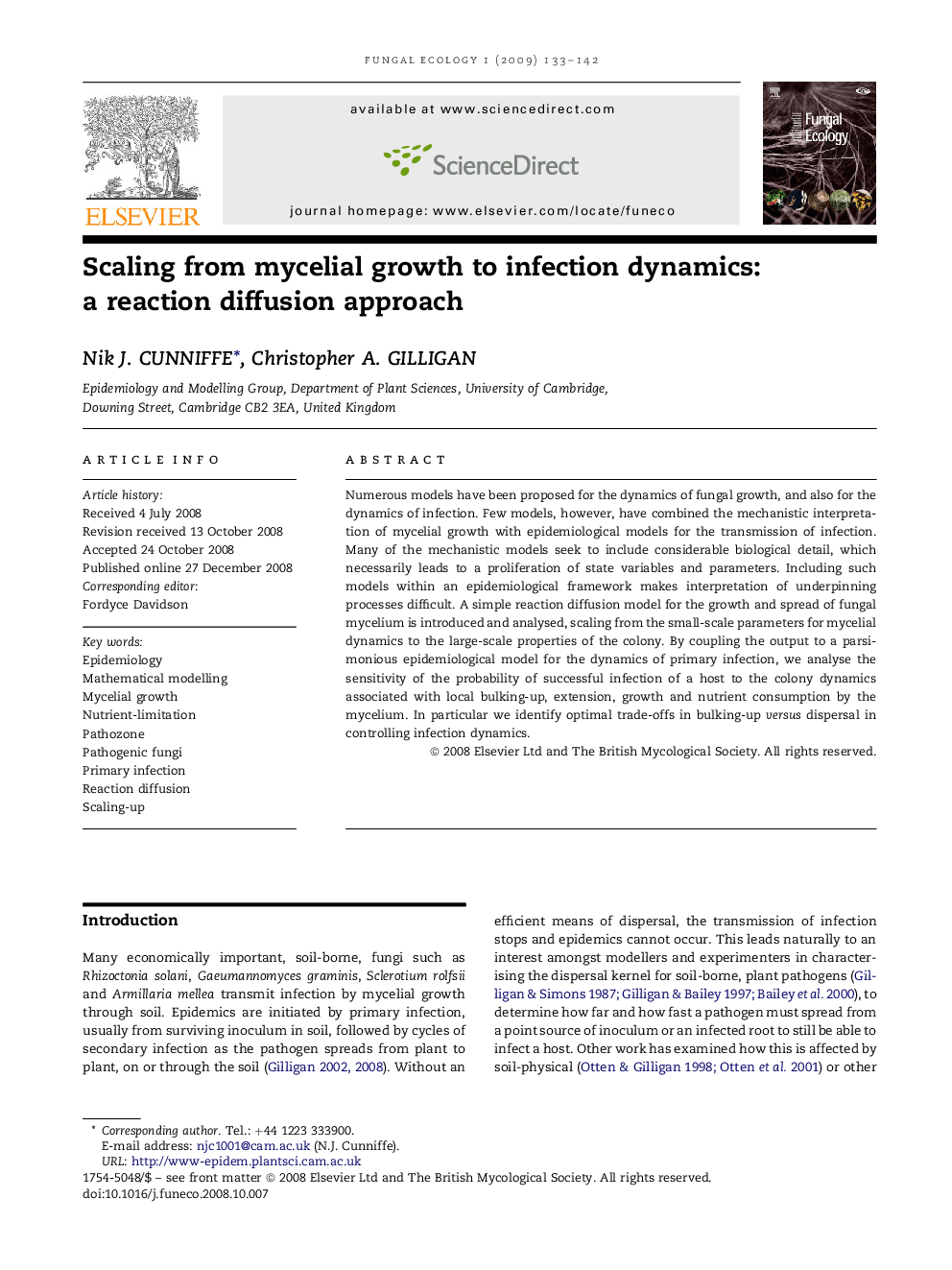| Article ID | Journal | Published Year | Pages | File Type |
|---|---|---|---|---|
| 2053762 | Fungal Ecology | 2008 | 10 Pages |
Abstract
Numerous models have been proposed for the dynamics of fungal growth, and also for the dynamics of infection. Few models, however, have combined the mechanistic interpretation of mycelial growth with epidemiological models for the transmission of infection. Many of the mechanistic models seek to include considerable biological detail, which necessarily leads to a proliferation of state variables and parameters. Including such models within an epidemiological framework makes interpretation of underpinning processes difficult. A simple reaction diffusion model for the growth and spread of fungal mycelium is introduced and analysed, scaling from the small-scale parameters for mycelial dynamics to the large-scale properties of the colony. By coupling the output to a parsimonious epidemiological model for the dynamics of primary infection, we analyse the sensitivity of the probability of successful infection of a host to the colony dynamics associated with local bulking-up, extension, growth and nutrient consumption by the mycelium. In particular we identify optimal trade-offs in bulking-up versus dispersal in controlling infection dynamics.
Keywords
Related Topics
Life Sciences
Agricultural and Biological Sciences
Ecology, Evolution, Behavior and Systematics
Authors
Nik J. Cunniffe, Christopher A. Gilligan,
